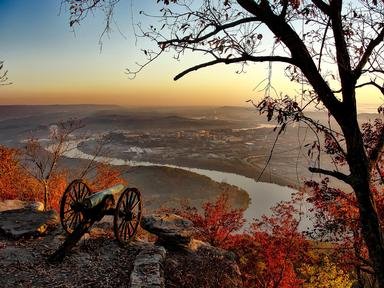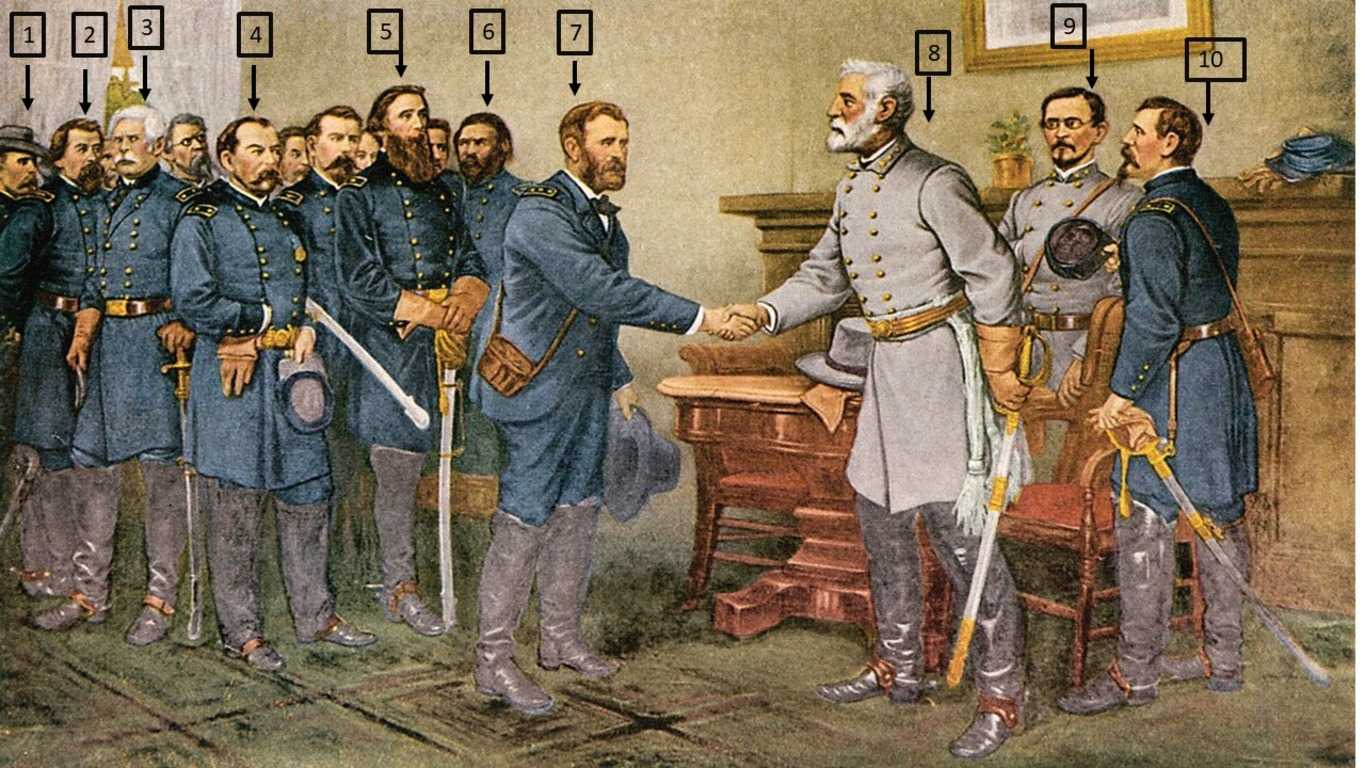
Label These Civil War Figures at Appomattox Quiz
Thomas Nast created "Peace In Union" in 1895, which depicted the surrender meeting at Appomattox Court House in 1865. Label each of the men in that painting. And learn a bit more about this momentous day in U.S. history.
A label quiz
by stephgm67.
Estimated time: 3 mins.
